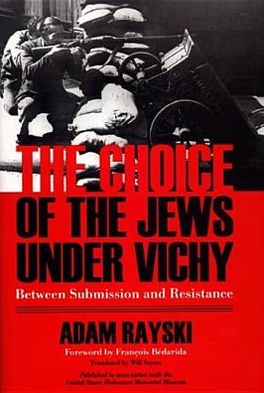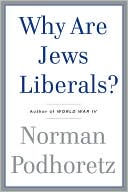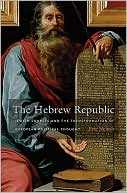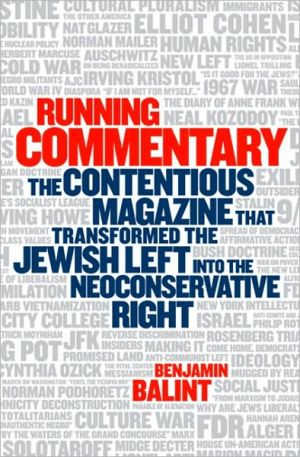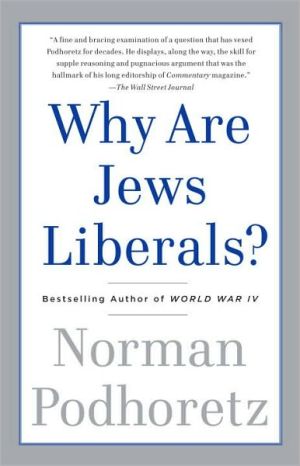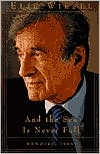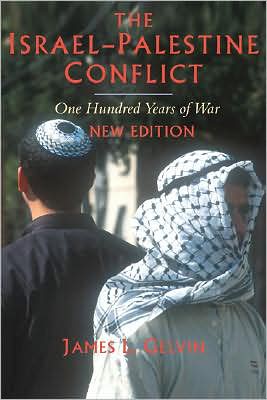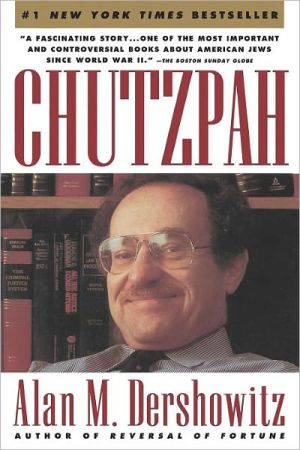The Choice of Jews under Vichy: Between Submission and Resistance
Based on extensive research into previously unpublished sources, including the archives of the military, the Central Consistory of the Jews of France, police prefectures, and Philippe Petain, Adam Rayski clearly demonstrates the Vichy government's role as an accomplice in the Nazi program of genocide. He also explores the sizeable prewar divide between French-born and immigrant Jews. This manifested itself in cultural conflicts and mutual antagonism as well as in varied initial responses to...
Search in google:
Based on extensive research into previously unpublished sources, including the archives of the military, the Central Consistory of the Jews of France, police prefectures, and Philippe Petain, Adam Rayski clearly demonstrates the Vichy government's role as an accomplice in the Nazi program of genocide. He also explores the sizeable prewar divide between French-born and immigrant Jews. This manifested itself in cultural conflicts and mutual antagonism as well as in varied initial responses to the antisemitic edicts and actions of the Vichy government. Rayski reveals how these communities eventually set aside their differences and united to resist the Vichy-supported Nazi threat. Library Journal Rayski, a journalist, historian, and former Resistance worker, uses archival material, oral interviews, and his own personal reminiscences to piece together a rich and detailed description of the challenges faced by French Jewry during World War II. Rayski describes key aspects of Jewish life in these years, including the long-standing cultural rift between French-born and immigrant Jews and its impact on the wartime experience, and covers issues ranging from the variety and diversity of Jewish resistance groups to the changing role of French public opinion as persecution and anti-Semitic propaganda escalated. Through interviews with survivors, he pieces together the "hidden face" of daily Jewish life under the Occupation and relates the experiences of those who went underground-an especially rich and valuable discussion as this phenomenon has rarely been studied. Rayski aims to answer fundamental questions, e.g., with France's record of xenophobia and anti-Semitism, why did nearly three-quarters of all Jews in the country survive? This complex but important book is recommended for scholars of French history and Jewish and Holocaust studies.-Marie Marmo Mullaney, Caldwell Coll., NJ Copyright 2005 Reed Business Information.
ForewordCh. 1The first anti-Jewish measures : dark forebodings11Ch. 2The consistory between religion and politics25Ch. 3Preliminaries to a massacre41Ch. 4The creation of the UGIF, the "compulsory community"56Ch. 5The yellow star : stigmatize, humiliate, and isolate the Jews72Ch. 6July 1942 : the great roundup and the first acts of resistance84Ch. 7The inhuman hunt in the southern zone102Ch. 8Drancy : the last circle before hell125Ch. 9"Night and fog" : the battle against silence147Ch. 10People of the shadows162Ch. 11Do not forget the children176Ch. 12"Intermezzo," or the Italian reprieve193Ch. 13Jewish perceptions of the war208Ch. 141943 : by the light of flames from the Ghetto221Ch. 15Jews, French and resistant242Ch. 16The Jewish scouts take up arms259Ch. 17The Jewish resistance in all its variety272Ch. 18CRIF : constructing the future in the shadow of death286Ch. 19A time for all fears and all hopes300Conclusion : the weight of the present and of the future313Afterword : the twenty-first century317
\ Library JournalRayski, a journalist, historian, and former Resistance worker, uses archival material, oral interviews, and his own personal reminiscences to piece together a rich and detailed description of the challenges faced by French Jewry during World War II. Rayski describes key aspects of Jewish life in these years, including the long-standing cultural rift between French-born and immigrant Jews and its impact on the wartime experience, and covers issues ranging from the variety and diversity of Jewish resistance groups to the changing role of French public opinion as persecution and anti-Semitic propaganda escalated. Through interviews with survivors, he pieces together the "hidden face" of daily Jewish life under the Occupation and relates the experiences of those who went underground-an especially rich and valuable discussion as this phenomenon has rarely been studied. Rayski aims to answer fundamental questions, e.g., with France's record of xenophobia and anti-Semitism, why did nearly three-quarters of all Jews in the country survive? This complex but important book is recommended for scholars of French history and Jewish and Holocaust studies.-Marie Marmo Mullaney, Caldwell Coll., NJ Copyright 2005 Reed Business Information.\ \
